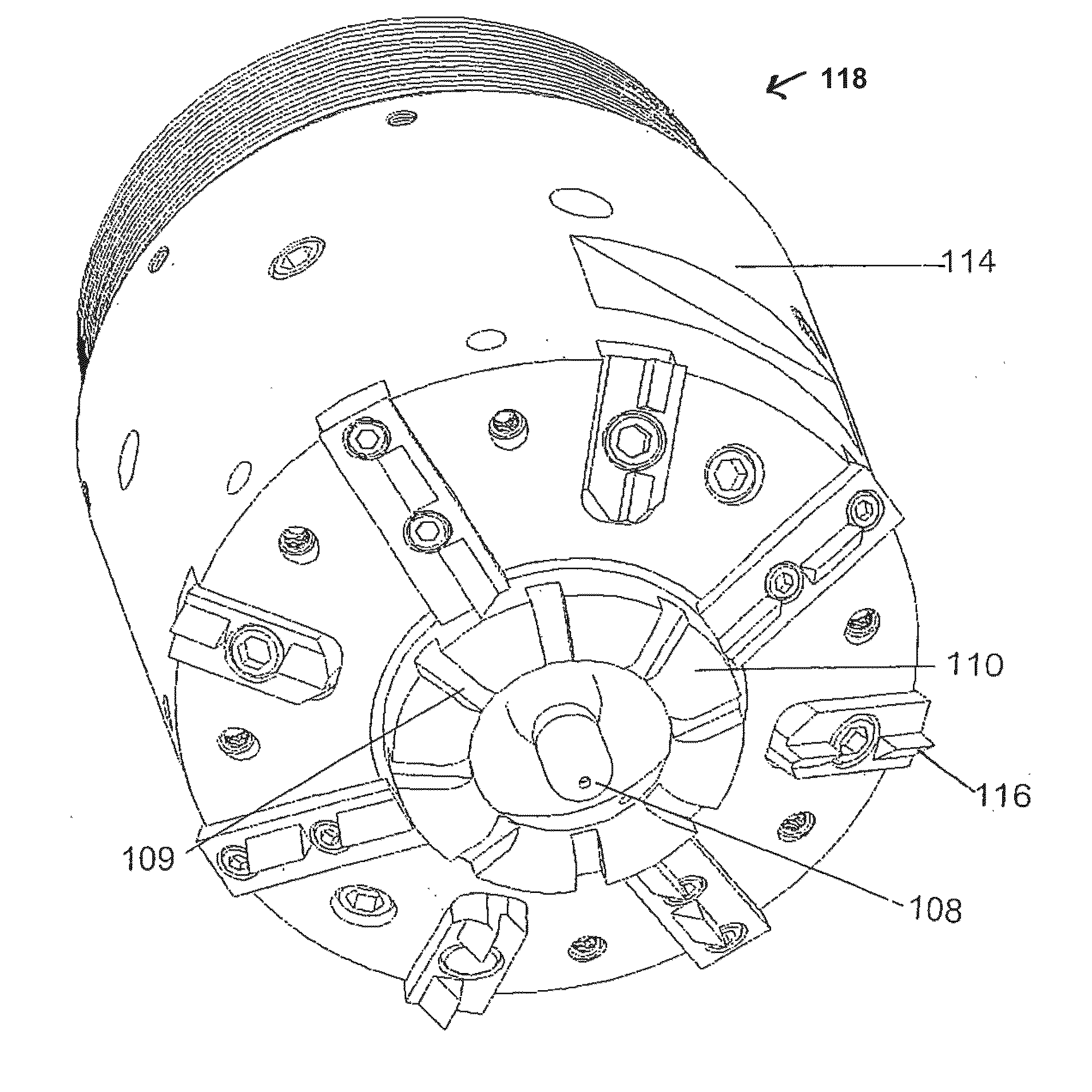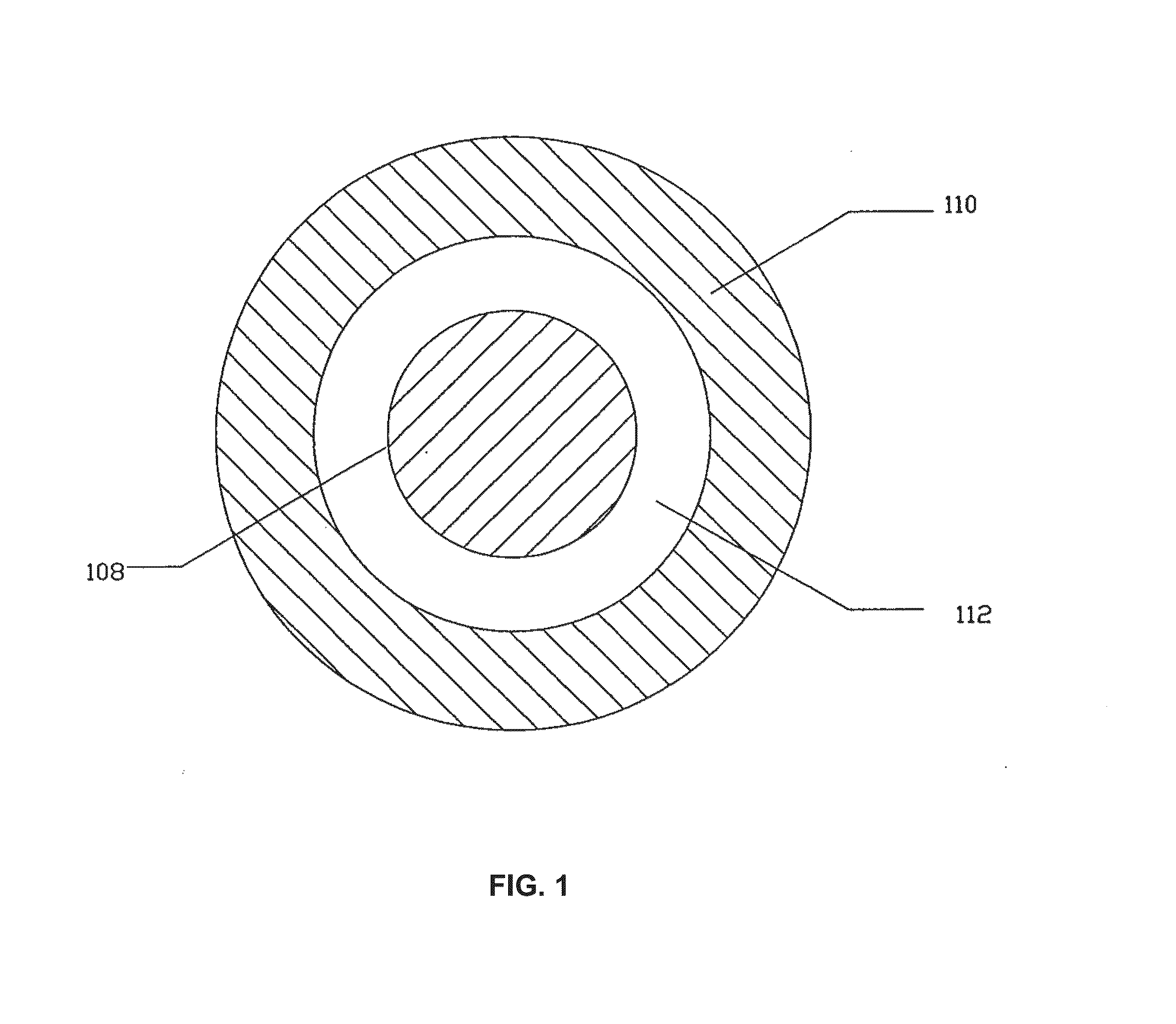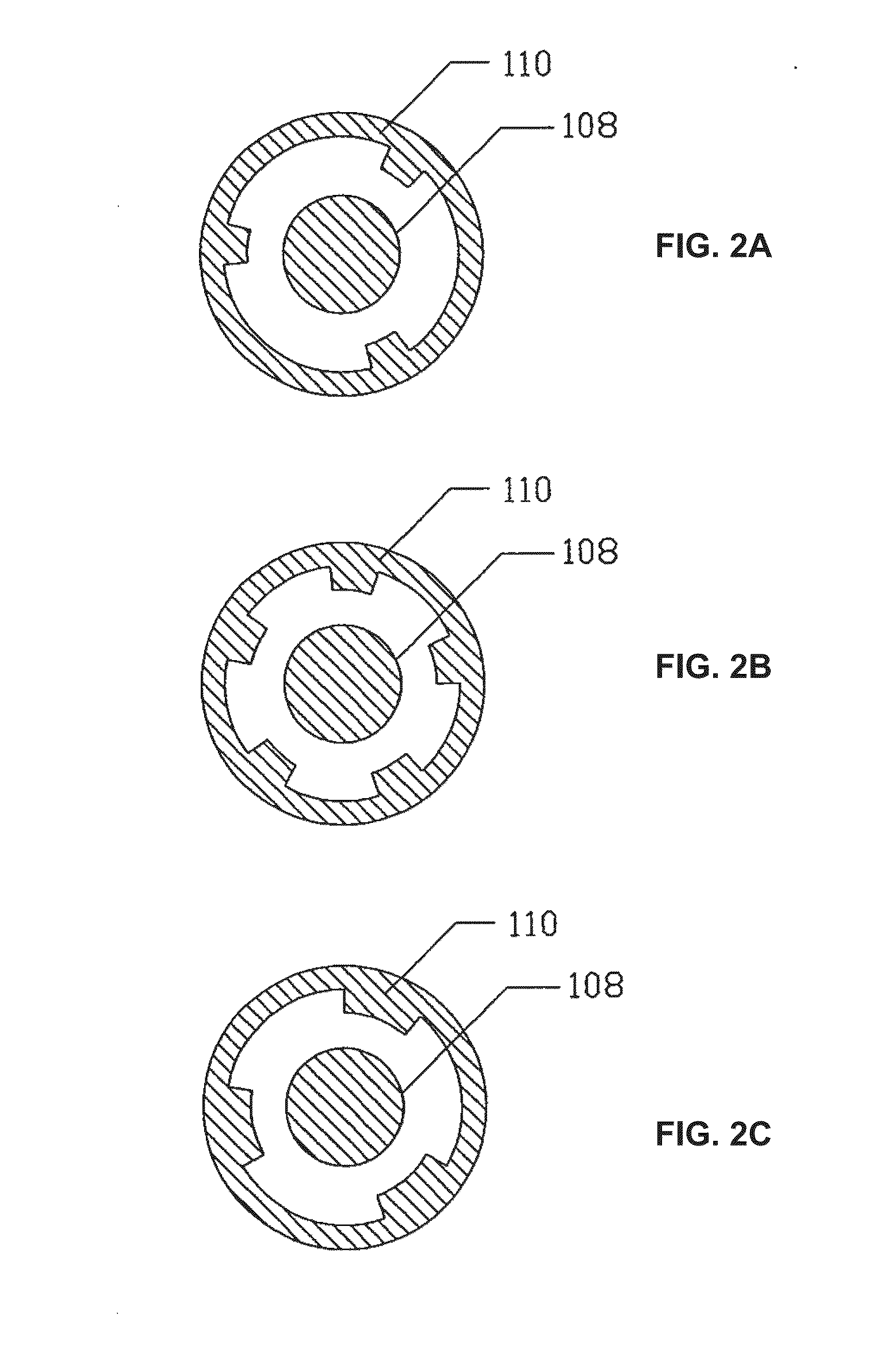Repetitive Pulsed Electric Discharge Apparatuses and Methods of Use
a pulsed electric discharge and pulsed drill technology, applied in the field of electrocrushing drills, can solve the problems of fractured rock, rock is fractured by repetitive application, and creates rock fragments, and achieves the effect of more uniform drilling
- Summary
- Abstract
- Description
- Claims
- Application Information
AI Technical Summary
Benefits of technology
Problems solved by technology
Method used
Image
Examples
example 1
[0215]An apparatus utilizing FAST Drill technology in accordance with the present invention was constructed and tested. FIG. 30 shows FAST Drill bit 114, the drill stem 216, the hydraulic motor 218 used to turn drill stem 216 to provide power to mechanical teeth disposed on drill bit 114, slip ring assembly 220 used to transmit the high voltage pulses to the FAST bit 114 via a power cable inside drill stem 216, and tank 222 used to contain the rocks being drilled. A pulsed power system, contained in a tank (not shown), generated the high voltage pulses that were fed into the slip ring assembly. Tests were performed by conducting 150 kV pulses through drill stem 216 to the FAST Bit 114, and a pulsed power system was used for generating the 150 kV pulses. A drilling fluid circulation system was incorporated to flush out the cuttings. The drill bit shown in FIG. 4 was used to drill a 7 inch diameter hole approximately 12 inches deep in rock located in a rock tank. A fluid circulation s...
example 2
[0216]A high permittivity fluid comprising a mixture of castor oil and approximately 20% by volume butylene carbonate was made and tested in accordance with the present invention as follows.
1. Dielectric Strength Measurements.
[0217]Because this insulating formulation of the present invention is intended for high voltage applications, the properties of the formulation were measured in a high voltage environment. The dielectric strength measurements were made with a high voltage Marx bank pulse generator, up to 130 kV. The rise time of the Marx bank was less than 100 nsec. The breakdown measurements were conducted with 1-inch balls immersed in the insulating formulation at spacings ranging from 0.06 to 0.5 cm to enable easy calculation of the breakdown fields. The delay from the initiation of the pulse to breakdown was measured. FIG. 31 shows the electric field at breakdown plotted as a function of the delay time in microseconds. Also included are data from the Charlie Martin models f...
example 3
[0331]The length of the drill stem was fifty cm, with a 5.5 meter long cable connecting it to the pulse modulator to allow operation in a one meter roof height. The drill was designed to go three meters into the roof with a hole diameter of approximately four cm. The drilling rate was approximately 0.5 meters per minute, at approximately seven to ten holes per hour.
[0332]The drill system had two drills capable of operation from a single pulse generator. The drill stem was mounted on a holder that located the drill relative to the roof, maintained the desired drill angle, and provided advance of the drill into the roof so that the operator was not required to hold the drill during the drilling operation. This reduced the operator's exposure to the unstable portion of the mine. While one drill was drilling, the other was being set up, so that one man was able to safely operate both drills. Both drills connected to the pulse generator at a distance of a few meters. The pulse modulator ...
PUM
 Login to View More
Login to View More Abstract
Description
Claims
Application Information
 Login to View More
Login to View More - R&D
- Intellectual Property
- Life Sciences
- Materials
- Tech Scout
- Unparalleled Data Quality
- Higher Quality Content
- 60% Fewer Hallucinations
Browse by: Latest US Patents, China's latest patents, Technical Efficacy Thesaurus, Application Domain, Technology Topic, Popular Technical Reports.
© 2025 PatSnap. All rights reserved.Legal|Privacy policy|Modern Slavery Act Transparency Statement|Sitemap|About US| Contact US: help@patsnap.com



